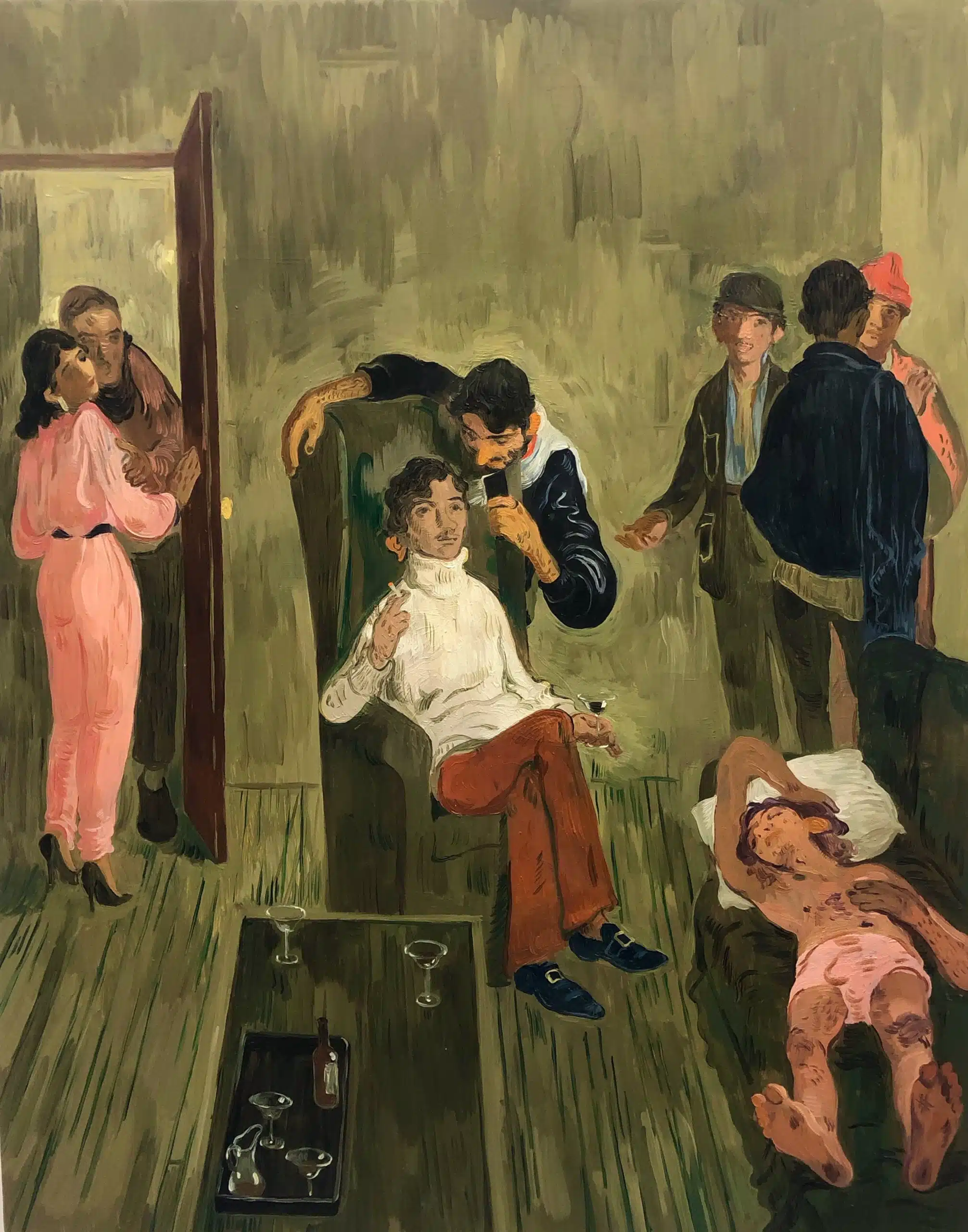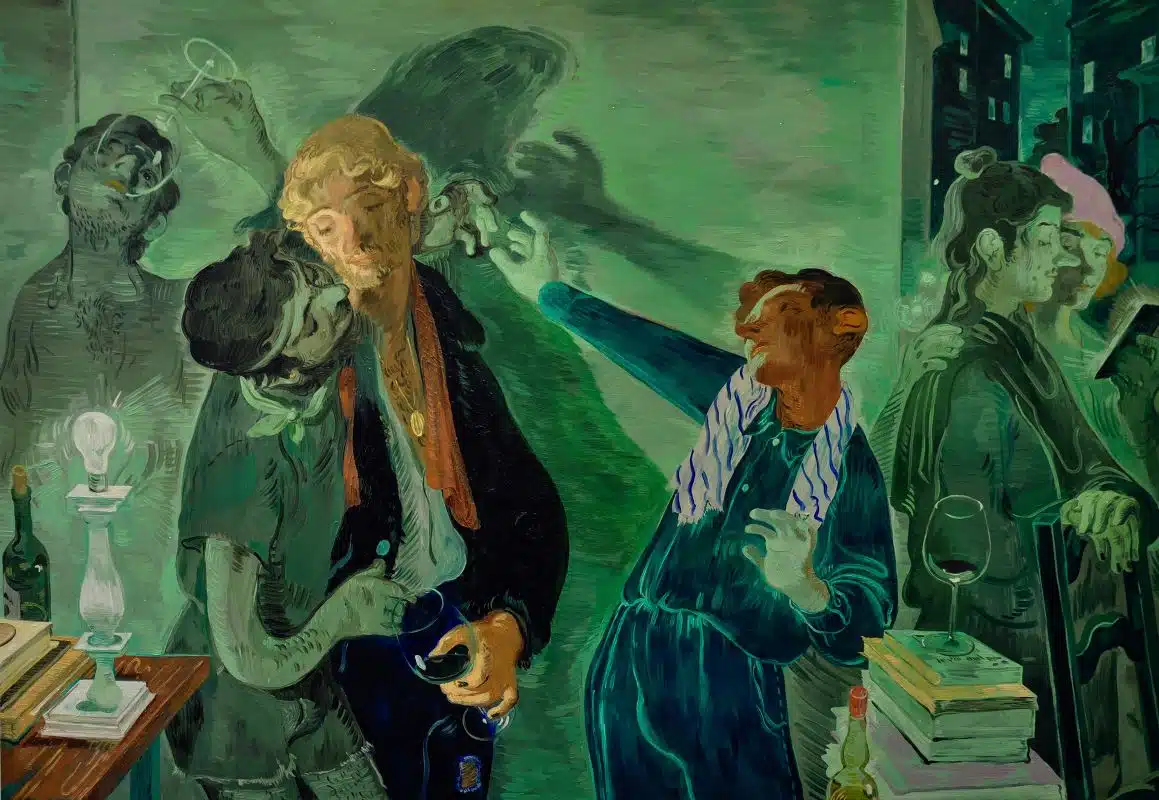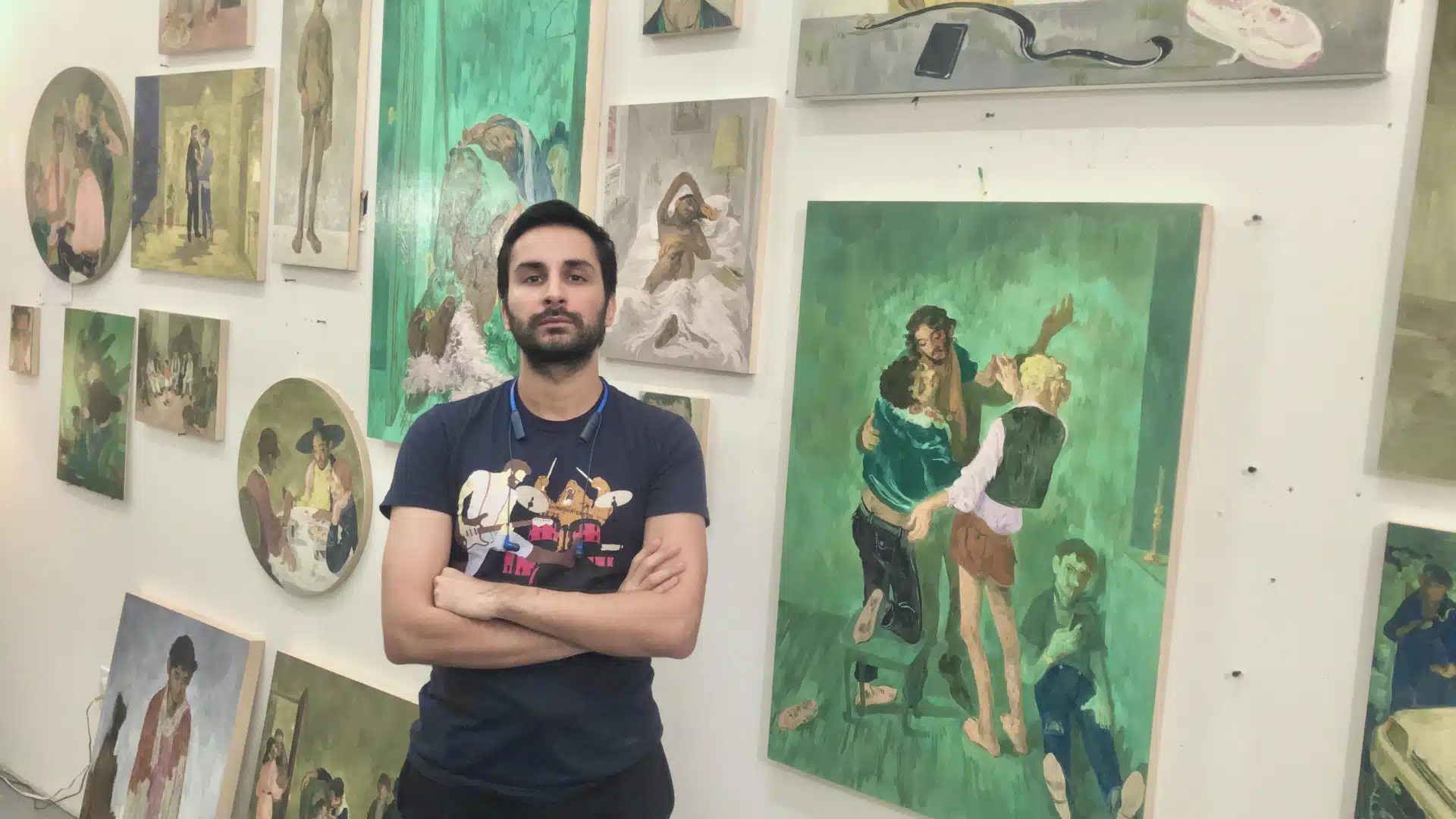‘Hygge’ – the Danish term for a lifestyle of cosy contentment and charming interiors—is the perfect word to describe the atmosphere of Salman Toor’s work. Imagine greeting a friend at the door of a tiny flat in downtown New York, a pair of trainers tucked neatly under a side table, and a book splayed out on a pink armchair. Or think of an intimate soirée, bathed in electric green light: bodies draped over each other cast long shadows on the wall, while empty wine glasses rest on stacks of books.
The striking detail of Toor’s paintings might remind us of the homely settings of many paintings from art history, from the peasant kitchens of Johannes Vermeer to the bedrooms and parlours of Pierre Bonnard. For Toor, creating these warm, interior spaces is particularly important. He makes the intimacy of queer gatherings feel at home in a predominately white, heteronormative tradition of oil painting, as well as revealing how his experience of being a migrant in America plays out in the space of the private. Here, we ask the painter some questions about what home means to him:
Where is home for you?
Home is where my loved ones are, and they are spread across borders and cultures. The idea of home is almost sacred in my work. Home is a place of repose, reflection and safety.

The Late Night Gathering, 2019. Oil on canvas. Courtesy of Nature Morte
Why does your apartment feature so frequently in your works?
I paint directly from imagination, without any references or models. I paint what I know. But the paintings are not always autobiographical. I often invent the interiors but they look like interiors I know well, mostly from tiny apartments in the bohemian East Village neighbourhood of downtown Manhattan where I live. I enjoy painting shelves, lamps, little fairy lights, and the cold light of smartphones. Painting is a way to create spaces I would like to live in. They are fantasies.
“Painting is a way to create spaces I would like to live in. They are fantasies.”
How do the private and the public come together in your art?
I like cosy, snug interiors. It is my personal lifestyle and design preference, I think. Bedrooms, living rooms, personal libraries, and the family dinner tables all find their way into my work. When I paint private spaces, I tend to think of the various centuries of European art history. I love the moderation and restraint of Dutch paintings, or the arrangement of figures in Diego Velazquez’s paintings, or the grave dignity in the faces painted by Peter Paul Rubens and other portrait painters. I think about the concept of public and private as being either in a fantastical agreement or in conflict with each other. In my work, the private is a place of refuge from the public, and sometimes the public invades or violates the private.

The Green Room, 2019. Oil on canvas. Courtesy of Nature Morte
How does colour play into your creation of intimate spaces?
Oftentimes my paintings demand a beautiful colour and my choice is completely an aesthetic one. I think of painting as an emotional exercise and colour is an emotional tool for me. For instance, the colour green has a poisonous nocturnal glamour; mauve and pastels are soporific; and cadmium yellow brings out a happy bright feeling. I paint fast and without a plan. Decisions are made on the spot and at times I make colour choices which don’t work so well, while combinations I never expected look really good. Chance plays a part in the process.
“In my work, the private is a place of refuge from the public, and sometimes the public invades or violates the private.“
Does your focus on interiors have any art historical precedents?
The history of European and Indian art is littered with interior scenes. Imagine the hundreds of Mughal portraits of royalty and courtiers sitting in comfortable homes with bolsters, latticed marble railings, young male attendants and hookahs all fitted neatly into the frame. Similarly, you will find domestic dramas unfolding gracefully in 17th century Dutch paintings – be it the quiet reading of letters, the discrete cheating of housemaids, or the Persian rug draped on a tabletop, hinting at international trade routes.
Salman Toor was born in Lahore in Pakistan in 1983 and holds a Masters in Fine Arts from the Pratt Institute in Brooklyn, New York. The recent solo exhibition – How Will I Know – at The Whitney marked the artist’s institutional debut.


